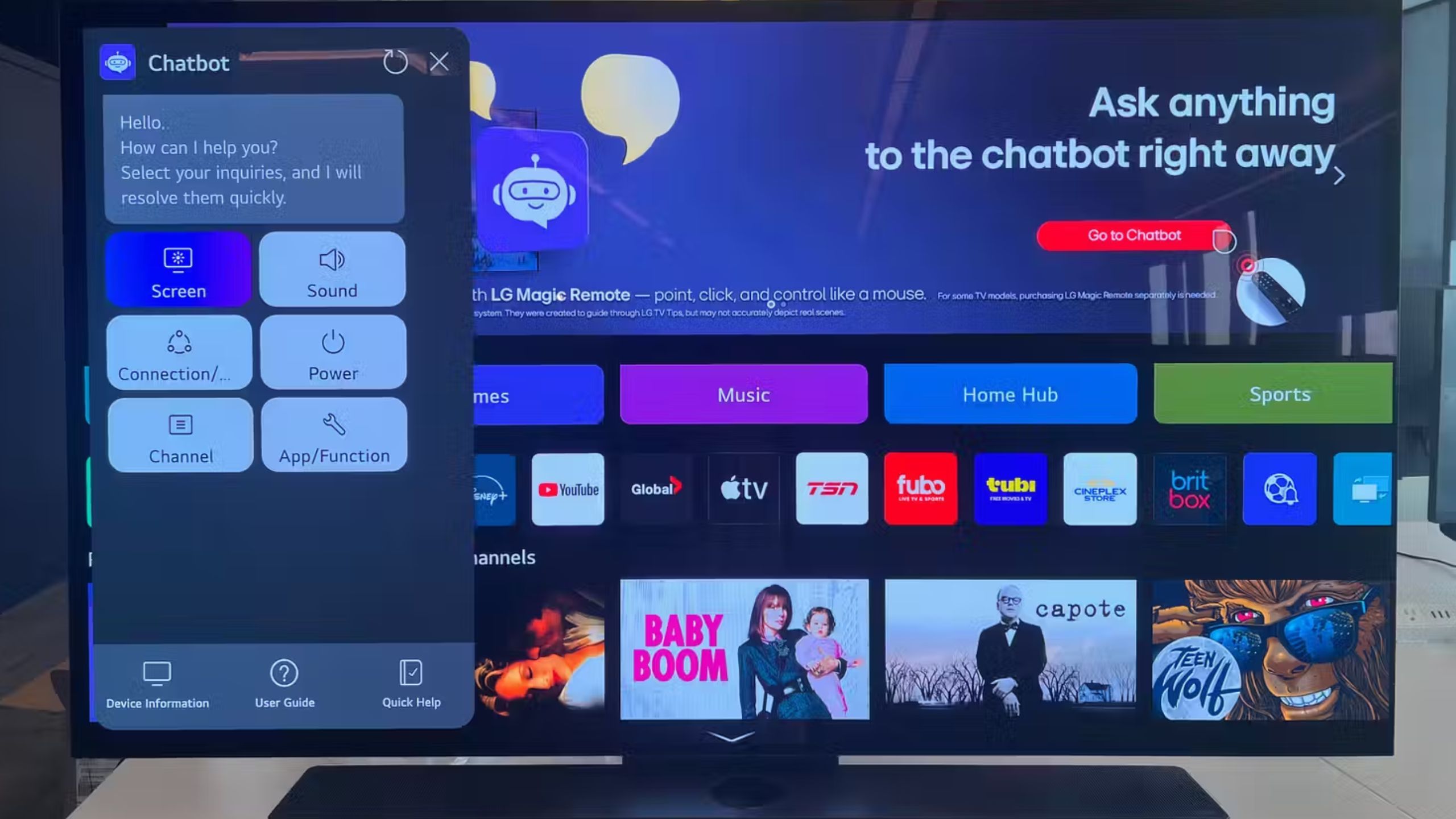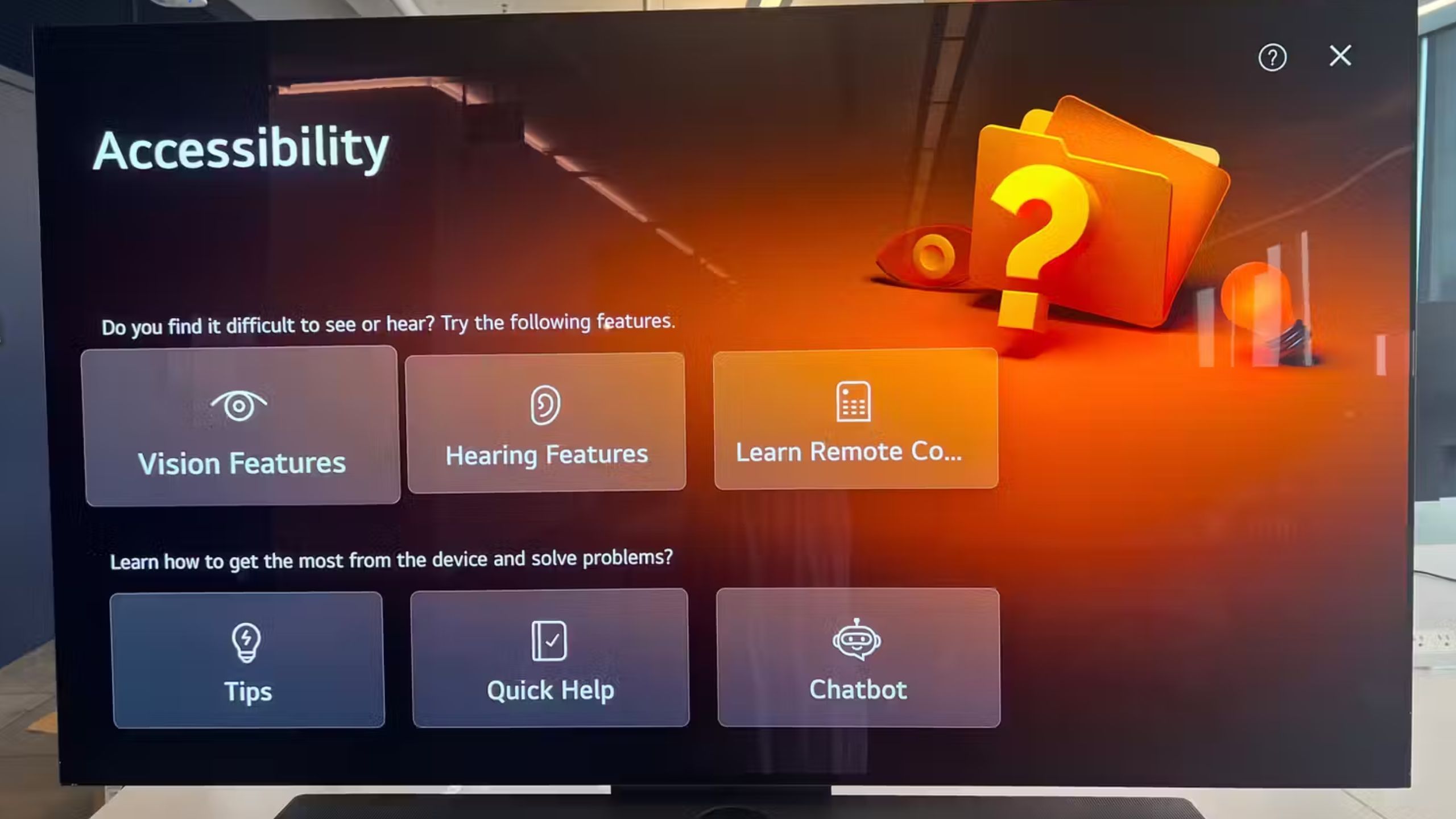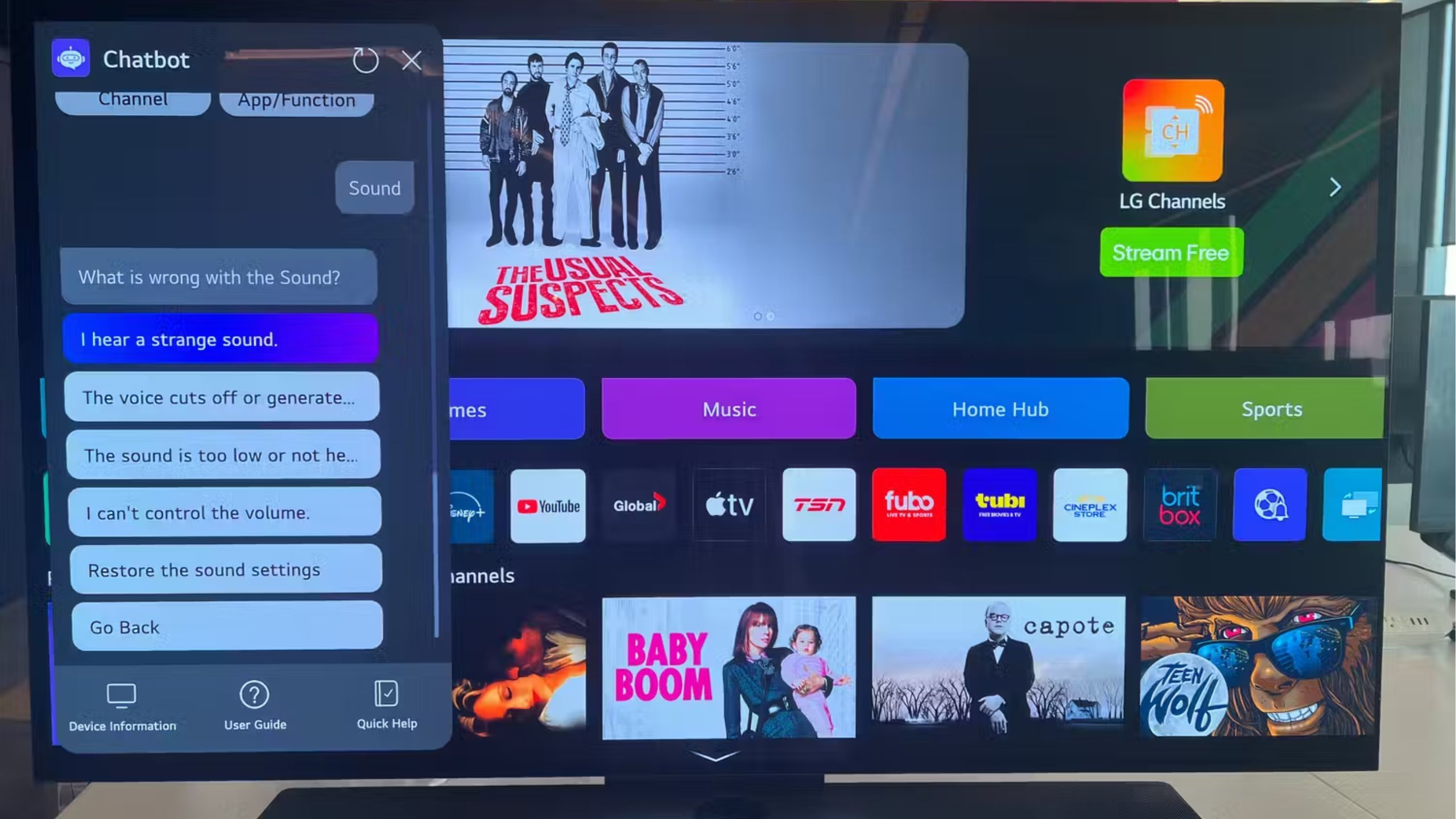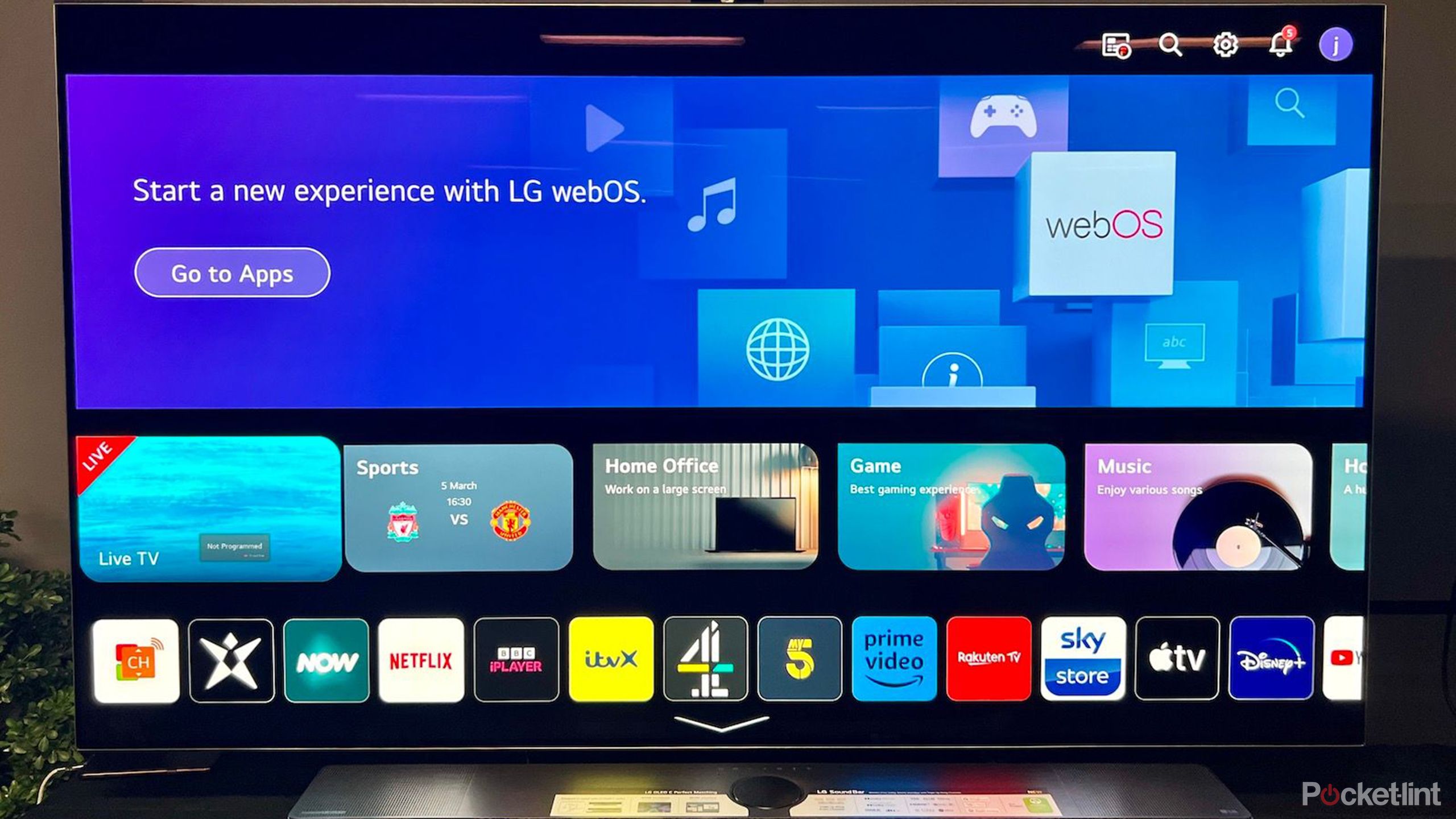Key Takeaways
- LG WebOS is a user-friendly smart TV OS with innovative features.
- WebOS focuses on simplicity, speed, and easy access to streaming services.
- LG’s best WebOS features include AI integration, accessibility options, and personalized content recommendations.
When it comes to smart TVs, LG’s WebOS stands out as a leader in user-friendly interfaces and innovative features. Plus, it’s my top pick for best Smart TV operating system overall — at least in my own personal experience. So, what is WebOS?
Introduced by LG in 2014, WebOS is an operating system designed specifically for smart TVs. Its specialty is delivering a more seamless and intuitive user experience, focusing on simplicity, speed, and providing easy access to a variety of streaming services. Generally, people who are familiar with WebOS feel that it’s revolutionized the way they interact with their TVs.
Ultimately, WebOS is built around a minimalist and intuitive interface, boasting a customizable ribbon-like launcher that allows you to switch between apps, live TV, and connected devices effortlessly. So, whether you’re streaming a movie, browsing through your apps, or connecting the TV to your other smart home devices, WebOS is overall smooth and responsive.
Most consumers typically focus on the brand and model of the TV rather than the specific operating system it uses. They may not realize the role the OS plays in their overall viewing experience. However, as I dive deeper into LG’s best WebOS features, it’s clear that LG’s operating system sets a high standard in the smart TV industry and why it continues to be a favorite among consumers.
1 WebOS and AI
Staying at the forefront of smart TV tech
LG/ Pocket-lint
Many big TV manufacturers have recently focused on making smart TVs more accessible, and Quick Card is one of LG WebOS 24’s solutions for that. Located front and center on the home page, this feature makes it significantly easier for users to access and utilize various accessibility features on their TVs. The Quick Card function provides convenient access to features like audio descriptions, subtitles and visual demonstrations of what these accessibility options look like when enabled.
The accessibility Quick Card not only highlights these features but also showcases how they work, making it simpler for users who need them to understand and enable the required accessibility settings right from the home screen. The Quick Card feature is a significant improvement over previous WebOS versions where accessibility options were often buried deep within settings menus and much harder to find — very counterintuitive for those who actually needed them the most.
2 LG ThinQ App integration
Personalized content recommendations
LG / Pocket-lint
ThinQ is a slick feature that offers natural language voice control through Google Assistant and Amazon Alexa. It enables users to manage their TV and connect their smart home devices seamlessly. It also provides personalized content recommendations based on past viewing habits and a comprehensive Home Dashboard for easy management of IoT devices.
Additionally, AI Picture Pro and AI Sound Pro optimize picture and sound quality in real-time. You’re going to get the best audiovisual experience with these features.
AI Picture Pro, for example, utilizes deep learning algorithms to recognize the type of content being viewed and automatically adjusts picture settings for optimal image quality, ensuring vibrant colors and sharp details. AI Sound Pro, on the other hand, analyzes audio content in real-time and adjusts sound settings to match the genre, whether it’s dialogue-heavy movies, sports, or music. Talk about immersing yourself in the media.
ThinQ AI essentially transforms the TV into a central hub for entertainment and smart home control.
3 AI chatbot
Troubleshooting revolutionized
LG/ Pocket-lint
LG WebOs’s AI chatbot tool is designed to enhance user interaction by providing intuitive voice and text-based assistance. The AI chatbot can answer questions, provide personalized content recommendations, and assist with TV settings and troubleshooting issues such as the screen being too dark, sound being too quiet, and so on.
Integrated with voice assistants like Google Assistant and Amazon Alexa, it lets you control the TV and the connected smart home devices hands-free. The chatbot feature leverages advanced natural language processing to understand and respond to user queries, making it easier for users to navigate their TV’s functions, discover new content, and manage their smart home ecosystem more efficiently and conveniently.
4 Browse the LG content store
And see a wide variety of options
While key apps like Netflix come pre-installed, WebOS lets you download additional apps from the LG Content Store to expand its smart TV’s capabilities and cater even more to your personal preferences. The LG Content Store offers a wide range of applications, including Hulu, Disney+, and YouTube. You can browse through various categories, such as entertainment, sports, news, and games, to find and install their desired apps. The store even features a selection of movies, TV shows, and additional content available for purchase or rent.
Trending Products








